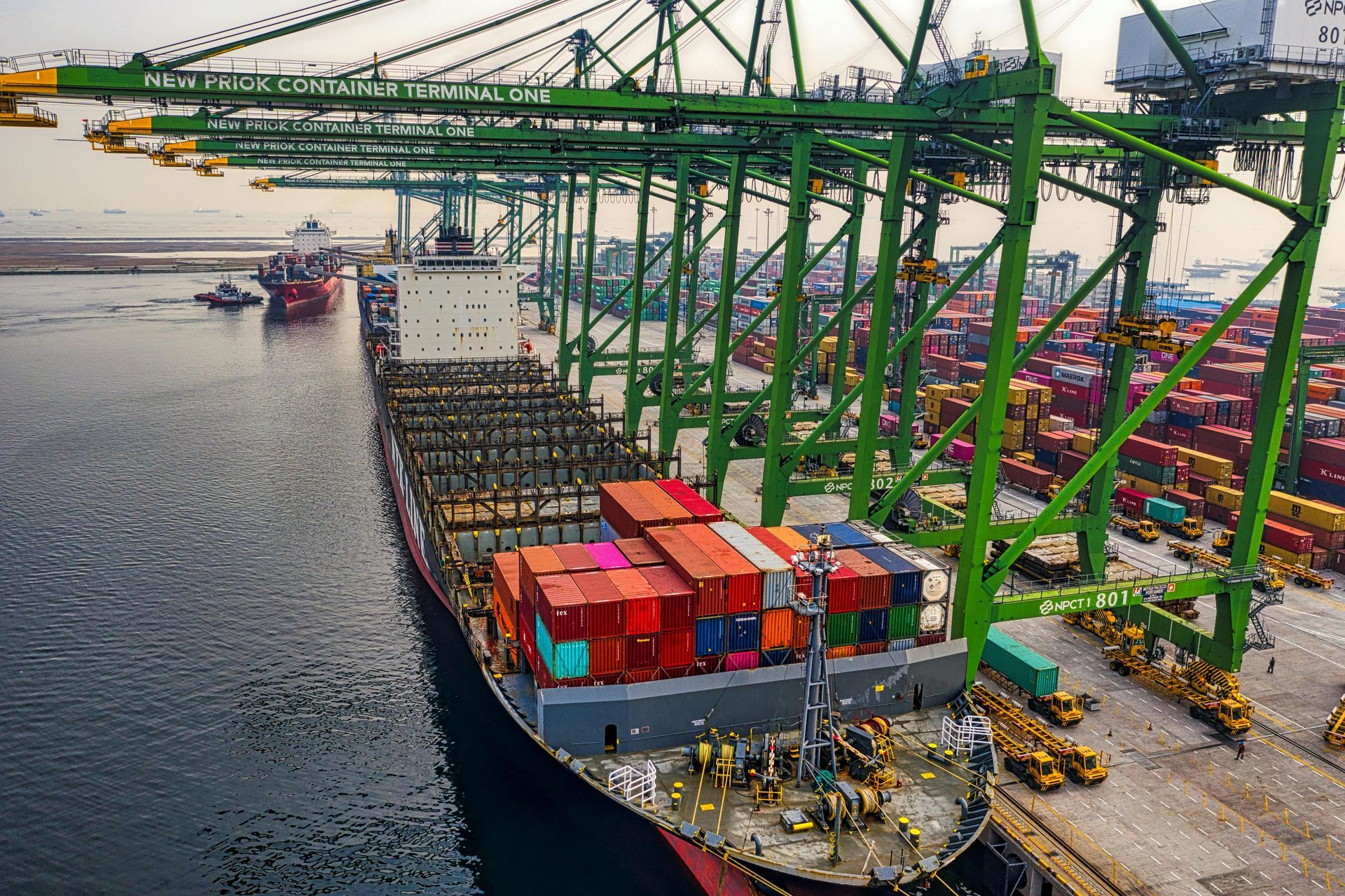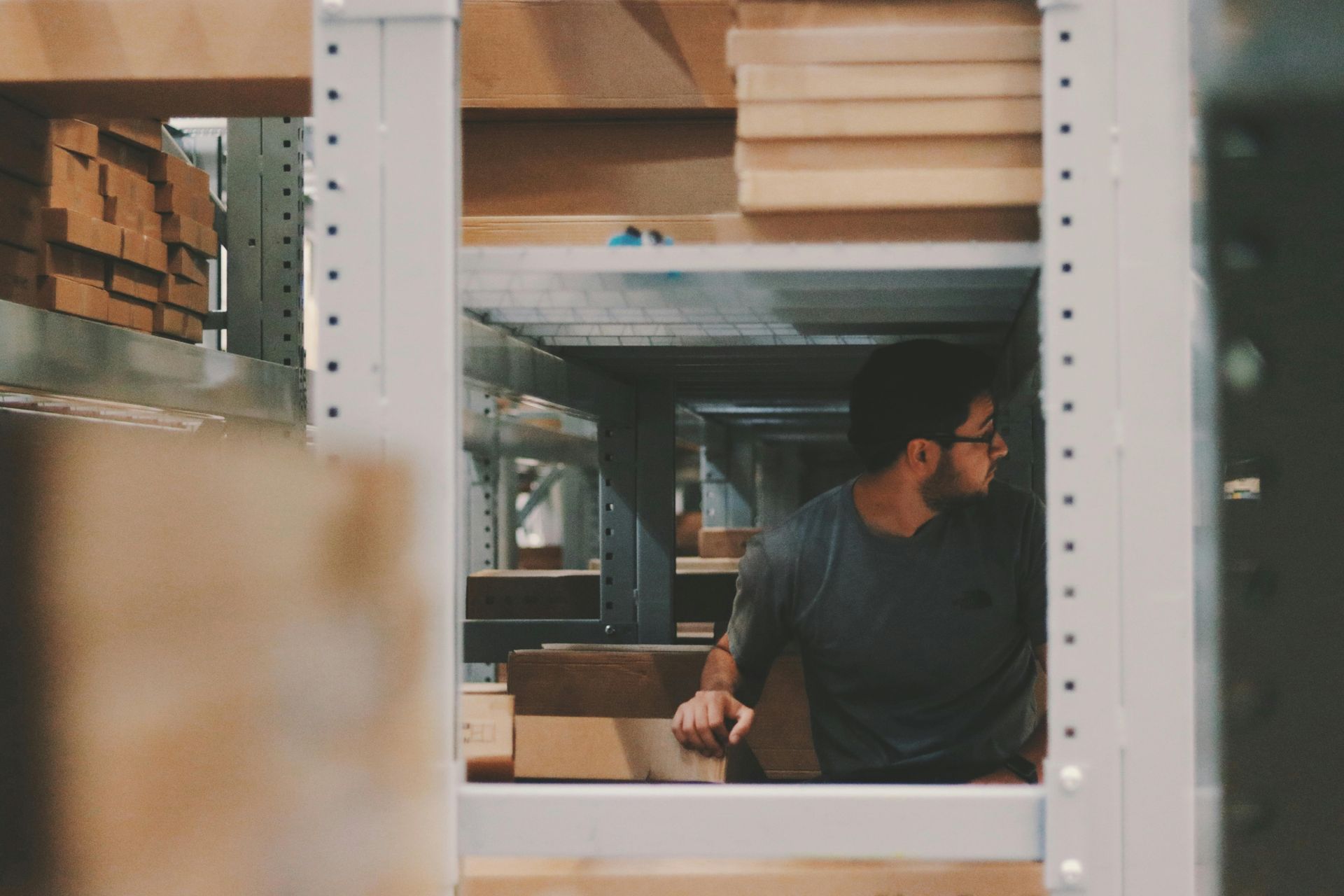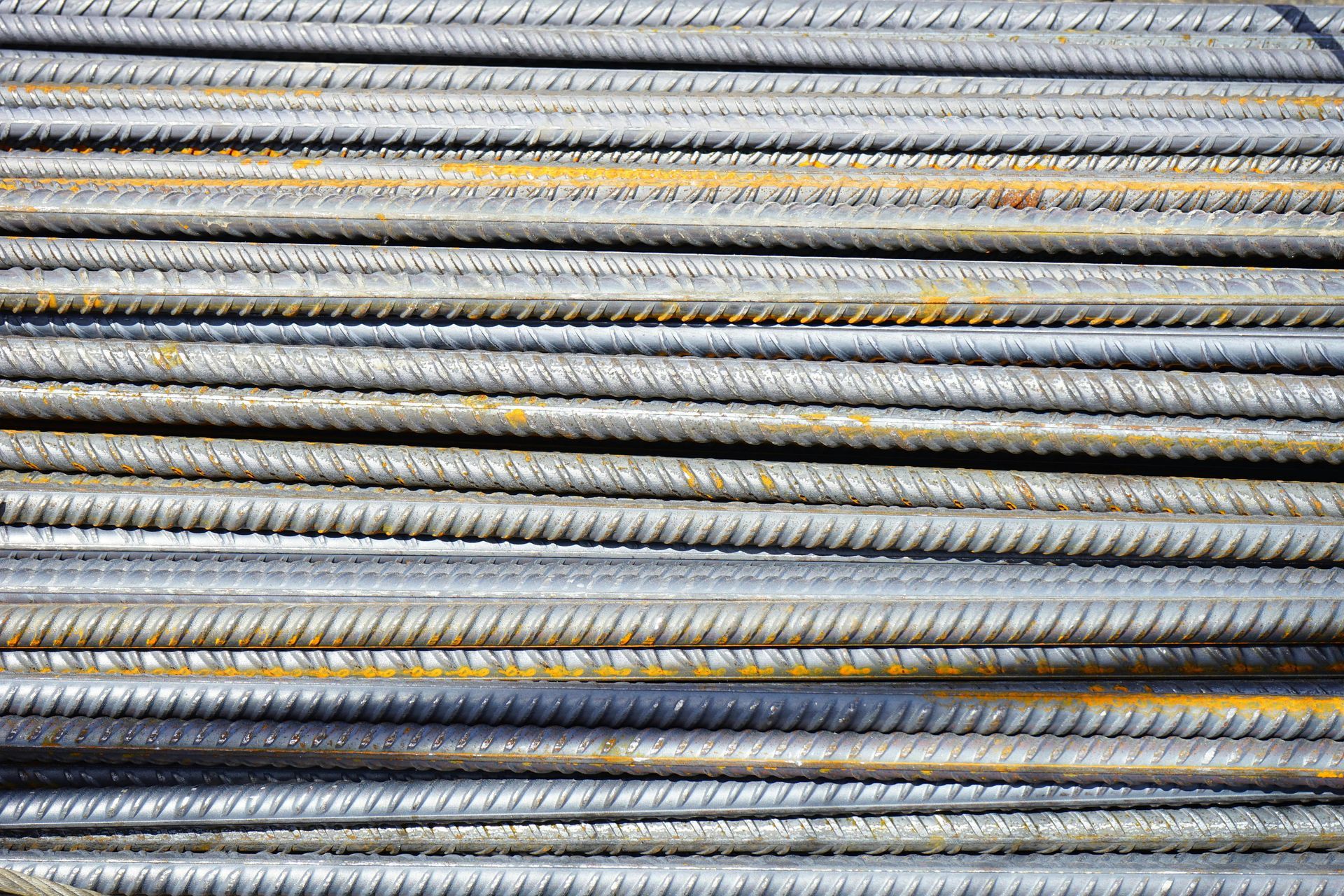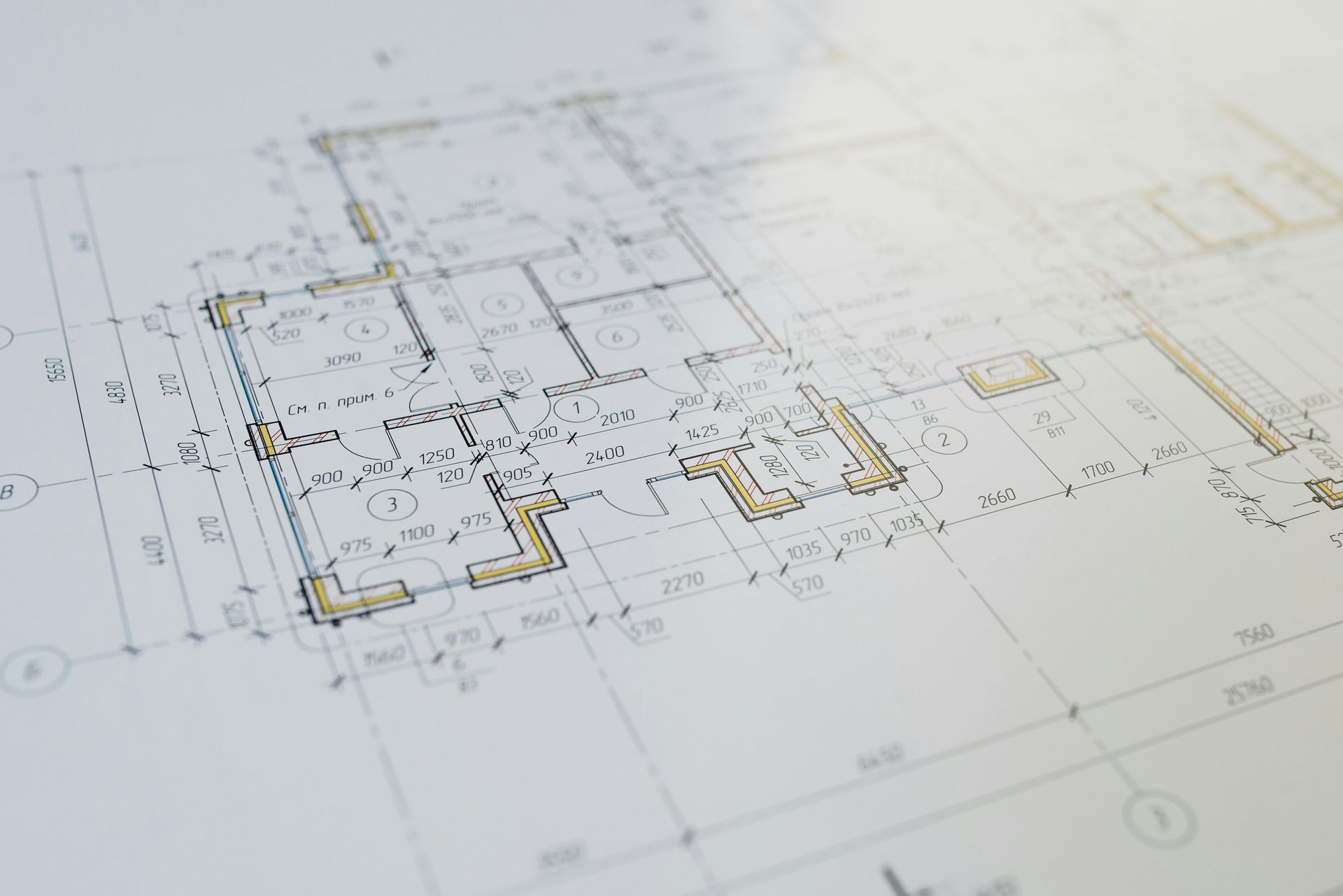
On the surface, construction is about concrete, steel, and lumber. It’s about schedules, specs, and square footage. But talk to any experienced builder, developer, or project manager, and they’ll tell you the real secret behind a successful job isn’t just what gets built—it’s who helps build it. Because behind every project that finishes on time, under budget, and with fewer headaches is a team of trusted partners—people who know your process, anticipate your needs, and show up when it matters most. In the construction supply world, there’s no shortage of vendors. Plenty of companies will give you a quote. Plenty will drop off materials. Plenty will tell you what you want to hear. But when things get tight—when the schedule compresses, when the weather shifts, when the spec changes unexpectedly—you quickly learn who’s actually in your corner. At ProPonents, we believe the difference between a supplier and a strategic ally is trust. And that trust isn’t built through one good order—it’s earned over time, project after project, problem after problem, solution after solution. Let’s take a deeper look at why strong supplier relationships matter more than ever—and what they can mean for the long-term success of your business. The Transactional Trap It’s easy to fall into the trap of treating your supplier like a vending machine. Submit the list, get the quote, cut the PO, and move on. When times are smooth and the scope is simple, this model might hold up. But the moment your build hits turbulence, that surface-level relationship starts to show cracks. Maybe your delivery is delayed and no one picks up the phone. Maybe a price changed unexpectedly and you’re left absorbing the margin hit. Maybe you need an alternate material fast and your rep is suddenly nowhere to be found. This kind of transactional approach reduces your supplier to a vendor—and it reduces your options when things go sideways. The real value comes from suppliers who see themselves as part of your team. The ones who aren’t just filling orders but understanding your goals . The ones who don’t wait for you to call with a problem—but call you when they spot one coming. What Real Partnership Looks Like We’ve had clients who worked with us for years before we handled a single quote. Others came to us in the middle of a crisis—scrambling to rescue a job that was slipping through their fingers. In both cases, our first move is the same: listen carefully, learn the project, and earn trust slowly. The strongest supplier relationships aren’t built on price alone. They’re built on performance. On how quickly we return your calls. On how well we understand your project cadence. On whether we can spot a material mismatch in your takeoff before it becomes a $20,000 change order. On how we respond when a delay threatens to stall your framing crew for a week. We’ve rerouted shipments overnight to beat a storm. We’ve sourced out-of-stock items from secondary markets without charging a premium. We’ve sat on jobsite tailgates at 7 a.m. with superintendents walking through day-by-day sequencing just to get a better handle on how we could help. That kind of service doesn’t come from a transactional mindset. It comes from a relationship built on mutual respect, open communication, and shared success. Why It Matters More Than Ever Today’s construction environment isn’t easy. Between rising costs, tighter timelines, labor shortages, and constant supply chain pressure, builders have less room for error than ever before. In this kind of climate, the difference between staying on track and falling behind often comes down to your support system. You can’t afford to have suppliers who disappear when things get complicated. You need partners who stay involved, stay accountable, and stay flexible—even when the job gets messy. Strong supplier relationships create resilience. They give you faster access to answers, better pricing leverage, more reliable deliveries, and clearer communication across every phase of the build. They also give you confidence —the confidence to commit to a deadline, to manage your crew efficiently, to stand in front of a client and say, “Yes, we can get that done”—because you know the people behind your material plan won’t let you down. Investing in Trust Pays Off When we look back at our longest and most successful client relationships, there’s a common thread: shared wins. Projects where we helped them finish ahead of schedule. Problems we solved together in real time. Margins we protected through strategic planning. These wins created trust. That trust became loyalty. And that loyalty led to deeper collaboration—and better results. One developer we work with today first came to us in a pinch—over budget, behind schedule, and frustrated by unreliable suppliers. We helped them recover one project. Then another. And now, three years later, we’re involved in their preconstruction meetings before ground ever breaks. They don’t just ask us for pricing. They ask us for insight. For strategy. For support. That’s the power of a long-term supplier relationship. It doesn’t just help you solve problems—it helps you avoid them entirely.

The blueprint might be precise. The schedule might be tight. The team might be ready. But if the materials don’t show up when they’re supposed to, nothing else matters. That’s the quiet reality every builder, developer, and project manager faces in today’s construction world. Lead times shift without notice. Inventory surges and slumps. And the supply chain—once predictable—is now a moving target that can change week to week. Over the past few years, the industry has experienced what can only be described as supply chain whiplash. Products that were once always in stock suddenly disappear. Delivery timelines stretch from days to months. Price volatility can swing margins in either direction. And for builders who still operate on old-school ordering models—waiting until they need something to place the order—the impact is harsh, costly, and often irreversible. At ProPonents, we’ve built our entire supply strategy around one question: how can we help our clients stay ahead of the curve? How can we make sure they’re not reacting to supply chain issues, but anticipating them—and building plans that keep projects moving no matter what the market throws at them? The answer, we’ve learned, lies in a mix of early communication, strategic sourcing, and total transparency. Let’s unpack what that looks like in practice—and why it matters more now than ever. The New Normal: Uncertainty as a Constant The idea of “just-in-time” material supply used to be a point of pride. You could place an order with a day or two of lead time, expect a delivery window, and schedule your crews accordingly. It was efficient. It worked—until it didn’t. Then came a global pandemic. Labor shortages. Factory shutdowns. Container backlogs. Raw material scarcities. And even as things slowly stabilized in some areas, the new reality is clear: supply chain risk is now a permanent part of the construction equation. That risk doesn’t just affect exotic or specialty products. It affects everything—from lumber and adhesives to fasteners, roofing, siding, insulation, doors, windows, and plumbing rough-ins. And it doesn’t just hit once per project—it comes in waves, changing based on season, location, and broader market pressures. What this means is that builders can no longer afford to wait until the last minute or assume availability. Because even if the price is right, the wait time may not be. And in construction, time is money. Planning Forward, Not Backward The most successful projects we support today don’t just have material quotes—they have material roadmaps . That starts with getting involved earlier. Before the concrete is poured. Before the plans are finalized. Sometimes even before the permits are pulled. It’s in those early weeks that we can do the most good—reviewing schedules, identifying high-risk items, and building a procurement strategy that actually reflects the build, not just a bill of materials. We work closely with developers and GCs to assess lead times on a rolling basis. Not just what the spec sheet says, but what our suppliers are actually reporting in real time. We identify products that might be flagged for future shortages. We explore comparable options that are in stock now, not “maybe next quarter.” We lock in priority allocations for long-lead items and build phased delivery timelines so that crews aren’t waiting on site—or storing pallets of product they won’t use for weeks. The entire strategy shifts from reactive to proactive. And once that shift happens, everything downstream starts to run smoother. The Hidden Cost of Playing Catch-Up It’s easy to think of inventory issues as a materials problem. But the ripple effects go much deeper. When lead times aren’t accounted for, the consequences cascade across the entire job. Crews are delayed. Subcontractors are rescheduled. Trade conflicts arise as timelines shift. Change orders multiply. And suddenly, a missed delivery of window trim or plumbing fittings becomes the reason why a floor sits empty or an inspector can’t sign off. Worse still, rushed orders often lead to paying more for expedited shipping, settling for subpar alternatives, or being forced into redesigns that disrupt budgets and confuse crews. We’ve seen projects bleed tens of thousands of dollars simply because the procurement plan wasn’t built to anticipate these kinds of disruptions. At ProPonents, we don’t believe builders should have to bear that burden alone. That’s our job—to keep you ahead of the curve so the jobsite can stay ahead of schedule. Total Visibility: The Cure for Uncertainty One of the most valuable tools we offer isn’t a product. It’s clarity . We keep our clients informed—not just about what’s happening now, but what’s coming. We communicate lead time shifts before they hit. We notify you when a supplier flags an upcoming shortage. We track every delivery window, every shipping update, and every inventory movement so that your team knows what to expect—and when to expect it. We believe transparency builds trust. And when you know what’s happening behind the scenes, you can make better decisions in the field. You can communicate more confidently with stakeholders. And you can plan with purpose, not panic. That’s what separates a vendor from a partner. And that’s what we strive to be. Real Results in the Field Not long ago, we supported a multi-building townhome project with a tight delivery schedule and limited staging capacity. The builder had previously struggled with other suppliers, who couldn’t coordinate drop-offs or offer real-time updates. That meant crews were often idle, or working around missing items, or overwhelmed by too much material dropped off at the wrong time. We stepped in and built a site-specific delivery schedule based on their framing and finishing rhythm. We locked in long-lead items early, gave weekly availability reports, and maintained rolling forecasts for every SKU on the job. Not only did the project stay on time—it finished two weeks ahead of schedule, with zero material-related change orders. That’s not luck. That’s logistics, strategy, and partnership working in sync.

For years, the word “sustainable” in construction was followed by a heavy sigh. Clients wanted it. Municipalities encouraged it. Marketing teams championed it. But the builders, developers, and contractors responsible for delivering it? Many of them had serious reservations. Sustainability, they believed, meant complexity. It meant compromise. And—most of all—it meant higher costs . That belief wasn’t entirely unfounded. In the early years of green construction, options were limited. Products were expensive. Certifications were difficult. And the market lacked the volume and competition to bring eco-conscious materials into the realm of feasibility for everyday projects. But times have changed. Today, a quiet revolution is taking place across the construction industry. Builders are integrating sustainable materials not as a premium add-on—but as part of their standard approach. And they’re doing it without blowing their budgets. At ProPonents, we’ve had a front-row seat to this shift. More clients are asking for recycled content, low-VOC products, energy-efficient solutions, and environmentally responsible alternatives—not because they’re chasing green awards, but because it makes sense: financially, logistically, and reputationally. Let’s take a closer look at how sustainability is evolving in construction—and how smart suppliers and forward-thinking builders are working together to make it practical, accessible, and affordable. A Changing Market - and Changing Expectations There was a time when green building was niche, reserved for high-end custom homes or government-funded civic projects. Today, the pressure to build sustainably comes from every direction. Municipalities are tightening codes. Lenders are attaching incentives to energy performance. Buyers and tenants are asking questions about air quality, efficiency, and lifecycle performance. And developers are increasingly viewing sustainability not as a burden—but as a value-add. What was once considered “alternative” is fast becoming standard. Materials that once carried a premium now compete directly with their conventional counterparts on price. Manufacturers, driven by consumer demand and shifting regulations, are expanding their lines of eco-friendly offerings. And in many cases, sustainable materials are proving to be more durable, easier to install, and better performing than the options they’ve replaced. Still, the myths persist: that green equals expensive. That sustainable equals unreliable. That eco-conscious equals complicated. That’s where the right supply strategy makes all the difference. Sustainable Materials Without the Sticker Shock One of the biggest shifts we’ve seen at ProPonents is in the availability and pricing of sustainable building products. Many of the items once considered niche are now simply the best options available —in performance, price, and logistics. Take insulation, for example. Mineral wool, once a specialty product, now comes in formulations that outperform traditional fiberglass in fire resistance, sound attenuation, and thermal retention—often at comparable costs when bought in bulk. Low-VOC adhesives and paints are no longer “premium” options; they’re the default choices on many of our large-scale residential and multifamily jobs, especially those targeting wellness certifications or sensitive occupancy requirements. Then there’s engineered lumber, which uses smaller, faster-growing trees and reduces waste in the milling process—without compromising strength or stability. In fact, for many developers, engineered wood products are now a cost-saving standard , offering straighter, more uniform material with less jobsite waste and rework. We’ve also seen a rise in recycled content materials, from drywall to flooring, that not only meet sustainability goals but often ship faster and handle more predictably than traditional products. These aren’t “green alternatives”—they’re better products, full stop. What makes the difference isn’t just what’s available. It’s how you plan for it. Planning Ahead: The Secret to Sustainable Success The mistake many builders make when considering sustainable materials is treating them like a last-minute switch. They wait until permitting or late-stage design to ask about alternatives—by which point, the options are fewer, the timelines are tighter, and the pricing is less favorable. The truth is, sustainable building isn’t more expensive—it’s just more dependent on planning . When we work with clients early in the design phase, we’re able to identify material substitutions that align with environmental goals and budget constraints. We can leverage volume buying, bundle green materials with standard packages, and lock in pricing that reflects full-project scope—not just line-item quotes. It’s in those early conversations—before the spec book is set, before the framing starts, before the lead times begin stacking up—that we have the most room to build sustainably without cost creep. And when sustainability is baked into the procurement strategy from the beginning, it becomes seamless. It becomes logical. It becomes part of the build—not a hurdle to overcome. The Broader Payoff: More Than Just Materials Sustainable construction isn’t just about what goes into the walls. It’s about the systems, values, and positioning behind the build. For developers, offering environmentally responsible housing is becoming a market differentiator—especially in the multifamily and build-to-rent spaces. For contractors, green practices support safety, simplify inspections, and create cleaner job sites. For owners, it means healthier living spaces, lower utility bills, and fewer maintenance headaches down the road. Even lenders are taking notice. Projects that include high-efficiency systems, sustainable materials, and responsible sourcing practices are increasingly eligible for favorable financing terms, tax incentives, and grant-based funding—especially in public-private partnership models. And for builders who can show that they deliver sustainability without inflating costs , the reputational benefits are long-term. Clients trust them. Municipal partners respect them. Future jobs come easier. The payoff is real—and it goes far beyond the immediate build. Where ProPonents Fits In We’re not here to greenwash. We’re not chasing buzzwords. What we care about is helping builders find the smartest materials for the job—materials that meet performance standards, align with budgets, and support long-term project success. If those materials happen to be recycled, low-VOC, locally sourced, or more energy-efficient? Even better. Our role is to help you navigate the growing world of sustainable construction without the stress. We know what’s on the market. We know how the pricing plays out. And we know how to work these decisions into your procurement plan in a way that makes sense for your job, your team, and your bottom line.

Every construction project is its own kind of ecosystem—a series of moving parts, personalities, deadlines, and decisions all woven together under pressure. But when you're building at scale, like in a 300-unit multifamily development, that pressure doesn’t just double or triple—it compounds. It multiplies. One missed delivery doesn’t just affect a crew. It affects dozens of subcontractors, months of planning, and thousands of square feet of work. At ProPonents, we don’t just see these projects as material drop-offs. We see them as complex operations that need to move with precision. From the first blueprint to the final walkthrough, our role isn’t just to provide product. It’s to anticipate needs, prevent friction, and keep the entire machine humming. This is the story of one such build—a mid-market, multi-structure residential development that could have gone sideways more than once. But because of smart planning, strong communication, and a supply strategy built from the ground up, it stayed on track, under budget, and ahead of schedule. Let’s take you behind the scenes. The Development: High Stakes in a Fast-Growing Market The client was a regional developer with an impressive track record and a growing footprint in the urban Southeast. Their newest project: a 300-unit multifamily complex consisting of five low-rise buildings across a multi-acre plot just outside a booming metro corridor. The location was prime—close to transit, walkable amenities, and ideal for workforce housing. The timeline, however, was tight. The developer had financing benchmarks to meet, occupancy deadlines to hit, and a contractor crew juggling multiple projects across the region. There was zero room for drift. Complicating matters further, each building was on its own timeline. Construction would happen in overlapping phases, with staggered starts and separate punch lists, meaning the material strategy had to be agile without becoming chaotic. There could be no guessing games, no “we’ll figure that out later” moments. It all had to be mapped, timed, and locked in well before crews ever touched dirt. That’s when we were brought in—not to fill orders, but to build a system. The Planning: From Product List to Project Strategy Most supply chains begin with a spreadsheet—a long list of SKUs, specs, and unit counts. Ours began with a meeting. We sat down with the developer, the GC, the architect, and key trade leads to understand exactly how this job was going to flow. We reviewed build sequences, delivery access points, storage limitations, unit standardization, and scope variables. We didn’t just ask when materials were needed. We asked why, how, and what might change. By digging deeper, we were able to identify pain points before they became problems. We learned that certain deliveries would need to happen outside of normal hours due to neighborhood traffic restrictions. We realized that window packages had to align precisely with HVAC rough-ins or else the entire timeline would slip. We mapped finish packages to be delivered in segmented loads so that punch-out teams weren’t working around extra material. Instead of planning the procurement around the warehouse, we planned it around the build. From there, we developed a supply roadmap: a phase-based, materials-by-building strategy that was aligned with the construction schedule and flexible enough to adapt in real time. Pricing was secured early, commitments from manufacturers were locked, and delivery windows were reserved well before the market began to tighten. The developer had peace of mind. The GC had predictability. And the trades had clarity—no guesswork, no panic calls, no waiting around for a truck that might or might not show. The Reality: When Things Go Wrong (and Still Stay On Track) Of course, no project runs exactly as planned. Delays are inevitable. Scope changes happen. External forces don’t ask for permission. At one critical point in the project, a key window manufacturer announced unexpected lead time increases due to supply chain backups at their central facility. For most jobs, this would have triggered a cascade of setbacks—reordering, redesigns, rescheduling trades. But because we were monitoring lead times week over week, we saw it coming before the official notice ever hit our client’s inbox. We quickly sourced two comparable product lines, matched specifications, and provided samples to the design team within 48 hours. One was approved by the architect within the week. We rerouted deliveries, updated timelines with the contractor, and never lost a single day on the schedule. On another occasion, a warehouse labor issue impacted a delivery that was set to support the fourth building’s framing crew. Thanks to our pre-staging strategy, materials for that phase were already held at a satellite yard within range. We diverted the shipment, coordinated a new drop window, and had everything on site and ready before the crew even realized there was a risk of delay. This is what it means to build with foresight. Not just responding to problems, but insulating the entire process against them. The Outcome: On Time, Under Budget, and In Full When the dust settled—literally and figuratively—the development had hit every one of its scheduled milestones. All five buildings were delivered on time. No material-related delays occurred at any stage of the project. And thanks to proactive pricing agreements and bulk purchasing strategy, the developer came in nearly five percent under their original materials budget—a number that had real, tangible impact on their bottom line. Beyond the numbers, the builder and GC both reported significantly fewer RFIs related to materials, fewer mid-phase change orders, and less stress at every major transition point. There was clarity, consistency, and trust across the board. This wasn’t a perfect project. There were weather challenges. There were late-stage tenant revisions. There were the usual headaches of managing a jobsite with five buildings and dozens of subs. But through it all, the supply chain held. The materials showed up. And the build kept moving forward. The Takeaway: Success Begins with Supply Strategy In construction, success isn’t measured just by the ribbon-cutting. It’s measured by the quiet efficiency behind the scenes—the projects where deadlines are met without drama, where costs are controlled without cutting corners, and where suppliers operate like true partners instead of vendors. That’s what this project represented. Not a showcase of product—but a showcase of partnership . If you’re heading into a complex, phased build and feeling unsure about how your material plan will hold up under pressure, we’re here to help. We don’t just ship products—we build systems. Systems that work under pressure. Systems that protect your project. Systems that deliver results.

If you’ve worked in construction long enough, you’ve probably heard this phrase: “It’s going to cost more than we thought.” It’s one of the most common—and dreaded—realities in the industry. Going over budget doesn’t just eat into profit margins. It shakes client confidence, delays progress, and can throw an entire project off the rails. And while some cost overruns are truly unavoidable, most of them stem from avoidable mistakes made early in the process. Whether you’re a builder, developer, or general contractor, knowing where these traps are—and how to sidestep them—can mean the difference between staying in the black and bleeding cash. Let’s break down five of the most common (and expensive) mistakes that sabotage construction budgets—and what to do instead. 1. Overengineering the Design Every project needs a solid structural foundation—but overdesigning a building can quietly drain your budget before construction even begins. This often happens when engineers, in an effort to stay conservative, spec materials or systems that far exceed the actual load or code requirements. The result? Higher-cost materials, more labor, and more complexity than the project really needs. How to avoid it: Work collaboratively from the start. Bring your architect, engineer, and builder to the same table early in the process. Conduct value engineering sessions that identify where structural systems can be simplified without compromising safety or compliance. Less overkill = more breathing room in your budget. 2. Underestimating Lead Times and Availability You’ve got a delivery schedule. The job is moving fast. And then your supplier tells you the windows you spec’d are 10 weeks out. Suddenly, everything stalls—and the budget takes a hit. Too many projects suffer from poor procurement planning. Materials get ordered too late, or lead times aren’t factored into the timeline, resulting in rush fees, change orders, and sometimes even complete redesigns. How to avoid it: Start procurement planning during preconstruction. Build your material schedule alongside your build schedule. And wherever possible, work with a supplier who proactively tracks lead times and can help you source alternate materials if timelines shift. 3. Making Too Many On-the-Fly Changes Change orders are a fact of life in construction—but when they pile up, they do more than just disrupt the workflow. They cost real money. Late-stage changes to design, scope, or material specs often require rework, reordering, or renegotiation—all of which throw off your original budget. Plus, frequent changes frustrate trades, delay downstream tasks, and weaken schedule discipline. How to avoid it: Establish firm decision-making protocols early. Make selections before mobilization whenever possible, and clearly communicate change order impacts to owners or clients before signing off. A culture of discipline pays off in consistency—and dollars. 4. Ignoring Site-Specific Variables Even the best project plans can fall apart if they don’t account for real-world conditions on the jobsite. Soil issues, staging constraints, utility conflicts, and local permitting timelines all carry cost implications. Failing to plan for these variables often results in unexpected workarounds, material loss, and contractor delays—all of which add up quickly. How to avoid it: Invest in thorough site analysis. Walk the site with your subs before mobilizing. Talk to inspectors and local agencies about timelines and restrictions. Use drone surveys, soil reports, and utility mapping where necessary. The more you know upfront, the fewer surprises you’ll pay for later. 5. Treating Material Procurement as a Commodity Here’s a silent budget-killer that many teams overlook: treating your material supplier like a vendor, not a strategic partner. When you bounce from supplier to supplier based on the cheapest bid, you may save a little upfront—but you lose consistency, support, and often miss out on volume pricing or better logistics. And when something goes wrong (a missed delivery, a pricing error, a substitution issue), you’re on your own. How to avoid it: Build a relationship with a supplier who understands your business, your schedule, and your standards. One who can help you plan ahead, lock in pricing, and communicate clearly throughout the build. Reliable materials aren’t just about availability—they’re about accountability . Small Fixes, Big Savings The truth is, most budget blowups don’t come from massive miscalculations. They come from a handful of small mistakes repeated across every phase of the project. The good news? They’re fixable. By getting your team aligned early, planning your procurement strategy, and treating your suppliers like the strategic partners they should be, you can turn your next project into something rare: a build that actually stays on budget. Want a second set of eyes on your procurement plan? Whether you’re pricing out a small build or planning a full development, we’re here to help. Contact us today to chat timelines, sourcing, and smarter supply strategies.

As temperatures rise, so does the pace of construction. For most builders, summer isn’t just another season—it’s go time . Permits are in hand. Crews are mobilized. Projects are underway. And every lost day means money left on the table. But while the summer rush brings opportunity, it also brings risk. Increased demand for labor and materials can put real strain on your schedule—and the last thing you want is for your build to stall because a critical delivery didn’t show up, or because you waited too long to place an order. At ProPonents, we work closely with developers, contractors, and project managers across the Southeast to prepare for peak season the right way: proactively, strategically, and with no room for guesswork . If you want this summer’s projects to run smoothly, now is the time to get serious about material procurement. Here’s what that really looks like—and how we help make it happen. Summer Isn’t the Time to Wing It We get it. The spring months fly by, and before you know it, you’re framing your first structure and trying to finalize orders for the next one. But this “just-in-time” approach to material sourcing might work in theory—it rarely holds up in reality. In summer, demand is up across the board. Warehouses are stretched. Delivery schedules tighten. Lead times lengthen. And prices tend to spike on high-demand materials, from framing packages to finishes. If you’re ordering on the fly, you’re putting your timeline—and your budget—at the mercy of availability. And let’s be honest: summer is also when jobsite mistakes get more expensive. You’ve got stacked crews, overlapping trades, and deadlines to hit. If the insulation doesn’t arrive on time, or your window package is wrong, there’s no slack in the schedule to absorb the hit. That’s why preparation isn’t a luxury—it’s a necessity. The Builders Who Win in Summer Are the Ones Who Plan in Spring The most successful contractors and developers we work with all have one thing in common: they think ahead . Before summer hits, they’ve already: Reviewed their build schedule and aligned it with material deliveries Ordered long-lead items well in advance Locked in pricing to avoid seasonal spikes Confirmed phase-based delivery logistics Coordinated with their supplier to prevent surprises This kind of planning doesn’t happen by accident. It happens with intention—and with a supplier who’s actively helping you stay on top of every moving part. At ProPonents, we don’t just respond to orders. We reach out. We ask questions. We flag issues before they turn into problems. And we build delivery plans that mirror your construction flow, not just the product list. We’re not just checking boxes—we’re protecting your momentum. Summer Builds Deserve a Summer Strategy One of the biggest mistakes we see is treating material planning the same way year-round. But summer builds have unique dynamics. The weather is more predictable, sure—but demand is at its peak . You’re not the only one breaking ground, which means you’re competing with dozens (or hundreds) of other projects for the same materials, the same freight routes, and the same delivery windows. A proactive summer procurement strategy means: Thinking in terms of phases , not just projects Understanding where materials can be pre-staged or bundled Building contingency buffers for critical deliveries Working with a supplier who has scale and flexibility For larger developments, it may also mean planning storage or staging areas ahead of time, so materials can be delivered early and secured on site before the real rush begins. We’ve helped countless clients navigate this. We’ve built delivery schedules that drop framing packages right before slab pour, and others that split finish materials across units in sync with walkthroughs. Whatever your build demands, we can map out a system that keeps you in rhythm and on budget. A Real-World Scenario: From Stress to Simplicity One of our clients—a general contractor overseeing a 100-home community—was facing a summer crunch last year. They were behind on material planning, struggling to coordinate deliveries, and constantly fighting fires with last-minute orders and delays. We sat down with their PMs and built a full summer procurement calendar. We reviewed site logistics, mapped phase-based deliveries, and used our volume relationships to lock in pricing on lumber and trim before the market shifted. Not only did they finish ahead of schedule—they saved thousands in freight and downtime. But more importantly, they avoided the daily stress of wondering when the next load would arrive. They could focus on quality and execution—not crisis management. That’s what real supplier partnership looks like. Planning Now Means Peace of Mind Later The best part about planning ahead? It gives you space to breathe. No last-minute phone calls. No blown-up schedules. No explaining to clients why you’re waiting on materials in the middle of peak season. Just a clear plan, a reliable supplier, and the confidence that comes with knowing your job is covered. We believe construction should be stressful for the right reasons—innovation, coordination, and craftsmanship. Not missing pallets and unanswered emails. That’s why we’re here.